
Live Wall crop

Environmental Designs is a boutique landscape design firm located in Laguna Beach, California. We specialize in coastal landscape designs, native gardens, and low water use plants. We can provide you with all your landscape design needs including, Preliminary Landscape Plans, Fuel Modification Plans, Computer renderings, 3-D renderings. Tel:(800)811-3010 Fax:(800)811-3014 e-mail: craig@environmentaldesignslandscape.com
925 x 694 - 119k - jpg - www.kenbowles.net/.../LotusScopariusN1.jpg
Image may be subject to copyright.
Below is the image at: www.kenbowles.net/.../VisKeyFlowersKey.htm
Great flower key
Video of palm trees in a pond at the beach. Washingtonia filifera.
Instant audio podcast
Your RSS feed at http://yournamehere.posterous.com/rss doubles as an iTunes-ready podcast feed. Just attach an mp3 to an email and you're good to go. Link to itpc://yournamehere.posterous.com/rss and let your friends subscribe in iTunes directly.
A simple way to start podcasting...I think.

This is an example of what not to do to a tree. I was driving around Corona del Mar and spotted this poor tree in a front yard. Notice the flush cut on the trunk, I guess the tree butcher did not want a big ugly stub sticking out from the trunk. This is not correct pruning technique.

Posting made easy, this is a service that will post to all my sites I specify. Here goes?
July 12, 2007
Job site:
Residence
Shady Canyon
Irvine, Ca.
Contractor:
On July 3, 2007, I inspected three Olive trees, Olea europa located at the newly constructed residence. I was contacted by Karen and informed that two Olive trees were dead or dying.
Overview
The Olive trees are mature old grove trees transplanted into the landscape, 15’ high x 15’ wide on average.
The trees have been in the ground for one year. Each tree was planted with the hole over excavated and a base of gravel was installed. Each tree has 2 vertical drains. Three Olive trees were in various stages of decline. The irrigation system seems to be over watering.
Site observations
Tree #1
Olive tree located at rear yard fence. 15’ high x 15’ wide. Large root flare with 5 trunks, DBH 9”. 100% dead leaf on branches. Some broken branches. Vertical drains observation; 30” below finish grade, 12” standing water. The soil is sandy clay with an acid PH of 4.0. PH reading was obtained with a hand probe in the field. Tree is dead.
Tree #2
Olive tree located near back yard pool. 15’ high x 20’ wide. Large root flare with 4 trunks, DBH 6”, 90% dead leaf on branches. 10% of green leaves are at branch tips. Vertical drains observation; 33” below finish grade, 10” standing water. The soil is sandy clay with an acid PH of 4.0. PH reading was obtained with a hand probe in the field. Tree is stressed.
Tree #3
Olive tree located at corner of garage next to driveway. 15’ high x 20’ wide. Large root flare with 5 trunks, DBH 5”, 2”, 5”, 4”, 6”. 10% dead leaf on branches. Some broken branches. Vertical drains observation; 30” below finish grade, 16” standing water. The soil is sandy clay with an acid PH of 5.5. PH reading was obtained with a hand probe in the field. Tree is exhibiting early stages of stress.
Action taken
· None.
Recommendations
Tree #1
· Replace. Remove all gravel and soil around old tree and replant with new.
Tree #1 & #2
· Pump water from vertical drains
· Reduce watering schedule
· The soil requires the addition of lime to bring it's pH level to 7.0-8.0 (alkaline).
· Drill or core 6 vertical 1” diameter holes around root ball + 24” away from root flare, take care not to damage large roots. This will allow oxygen to infiltrate the soil.
· Remove berm around trees and slope soil to atrium drains so surface water is carried away.
· Prune broken branches only, keep all remaining branches.
· Apply superthrive per manufacturer’s specifications.
Roots
Roots support the tree, store energy reserves, absorb water, and with the help of root-associated fungi, absorb elements that are essential for life. There are woody roots and non woody roots. The woody roots are large support roots and smaller fine roots, The non woody roots are non mycorrhizal or mycorrhiza— associated with fungi.
The anatomy of roots is basically the same as trunks. The roots have a vascular cambium, bark and wood. There is no pith in the center of roots. The roots usually have more parenchyma cells and fewer fibers. The distinction between growth rings is not as clear in roots as it is in trunks. Roots do not have a normal, colored, core of heartwood. The anatomical changes from trunk to root occur in a transition zone at the base of the tree. There is seldom an abrupt anatomical change from trunk to root. If there is a pith center, the section is trunk and not root.
Roots, like branches and twigs, also age and die. As roots die, boundaries form that resist the inward spread of pathogens. When non woody roots die, a corky periderm —boundary — forms that separates the non woody infected root from the healthy woody root.
Summary / Conclusion
If you have any questions concerning this report or if I can be of further service to you, please call me at any time.
Craig de Pfyffer
Certified Arborist
Certificate # WE-6533A
Expiration Date: 6-30-2010
Disclaimer
Although all the recommendations in this report are based on sound and accepted horticultural practices, the author cannot be held responsible for the final outcome of the recommendations, or any liabilities associated with this project. Tree inspections, in this case, do not cover internal cavities, structural defects, or diseases with non visible symptoms.
ENVIRONMENTAL DESIGNS ARBORIST
P.O. Box 247, Laguna Beach, CA. 92652 ·
Tel: (800) 811-3010 Fax: (800) 811-3014
November 30, 2006
Job site:
Residence
Newport Beach, Ca.
Client:
On November 17, 2006, I inspected one California Sycamore (Platanus recemosa) tree in the front yard, located at the residence under construction.
The Sycamore is a mature tree 35’ tall x 25’ wide with a 24” DBH trunk located in the front yard 12’ from the corner of the house. The tree has been severely topped in the past. The tree is infested with the Sycamore Borer. The tree has sustained recent construction damage. The trees overall health at the time of inspection is moderate.
Site observations
The Sycamore tree is growing in sandy loam soil with a neutral PH of 7.0. The PH reading was obtained with a hand probe in the field. No irrigation system is present at that time. The tree was severely topped in the past with large cuts on all the major branches. New growth has grown back with possible weak branch connections. Suckers have sprouted around the trunk.
Photo 1 & 2. Sycamore at 1234 Any Ln., Newport Beach, Ca
Avoid Topping Trees
Topping, also called stubbing or dehorning, is the drastic heading of large branches in mature trees. Main limbs are often sheared as with a hedge, leaving stubs. Topping is a poor pruning practice sometimes used to shorten tall trees, remove hazardous or diseased limbs, or to prevent interference with overhead utility lines.
Drastic pruning is rarely justified simply because trees are believed to be too tall. Removing extensive canopy may not leave enough foliage to manufacture sufficient food and may cause roots to die and the tree to decline. The large wounds left by topping often fail to close and are susceptible to internal decay and attack by wood-boring insects. Topping encourages growth of branches weakly attached below the cut, which become susceptible to wind breakage.
Prune trees properly when they are young to minimize the need for severe pruning when trees mature. Instead of topping, selectively remove upper limbs back to lower lateral branches. This proper method is more time consuming and expensive, but avoids future expense from improper pruning and provides a more attractive, healthier, and safer tree.
Sycamore Borer
Synanthedon resplendens
The tree is infested with Sycamore Borer Synanthedon resplendens as evidenced by the patchy, rough bark and frass at the base of the trunk.
Photo 3. Frass at base of trunk.
Photo 4. Sycamore Borer larva.
The Sycamore Borer occurs in the Southwest. It is prevalent in sycamore and also infests oak and ceanothus. Adults emerge from May through July after overwintering as larvae or pupae in tunnels in bark. Adults resemble yellowjacket wasps. The male is mostly yellow with a brownish black head and black bands on the body. Its legs are yellow, except for black along the margins on the portions nearest to the body. The wings are mostly clear with orangish to yellow margins. Adults display wasplike behavior by intermittently running while rapidly fluttering their wings.
Eggs are laid on bark, and the grublike larva is pink to white with a reddish brown head. When mature, it tunnels near the bark surface and leaves a paper-thin layer of outer bark through which the pupa protrudes just before adult emergence. Borer larvae cause bark to appear rough, and sawdustlike material sometimes accumulates around the tree base. The insect has one generation a year.
Sycamores tolerate extensive boring by this insect, and generally no control is recommended. Parasitic nematodes can be applied to kill larvae and are most effective in spring when tunnel openings are largest. A persistent pesticide applied to bark when adults are active also provides control, but this is generally not recommended unless trees are of such high aesthetic value that damage cannot be tolerated.
Roots
Multiple roots had been exposed and some had been cut or split due to a recent grade change. The exposed roots were located 12” to 24” below existing finish grade approximately 4’ from trunk.
Photo 5. Existing grade change.
Photo 6. Existing cut and damaged roots.
Roots support the tree, store energy reserves, absorb water, and with the help of root-associated fungi, absorb elements that are essential for life. There are woody roots and nonwoody roots. The woody roots are large support roots and smaller fine roots, The nonwoody roots are nonmycorrhizal or mycorrhiza associated with fungi.
The anatomy of roots is basically the same as trunks. The roots have a vascular cambium, bark and wood. There is no pith in the center of roots. The roots usually have more parenchyma cells and fewer fibers. The distinction between growth rings is not as clear in roots as it is in trunks. Roots do not have a normal, colored, core of heartwood. The anatomical changes from trunk to root occur in a transition zone at the base of the tree. There is seldom an abrupt anatomical change from trunk to root. If there is a pith center, the section is trunk and not root.
Roots, like branches and twigs, also age and die. As roots die, boundaries form that resist the inward spread of pathogens. When nonwoody roots die, a corky periderm boundary forms that separates the nonwoody infected root from the healthy woody root.
Image 7. Plan showing construction fence location, wall locations and potential root water irrigation head locations.
Platanus racemosa California sycamore
Robust native of California foothills and Coast Ranges; grows near streams in the wild. Deeply lobed leaves turn dusty brown early in autumn; in mild coastal climates, they hang on until new growth starts.
Leaf: Alternate, simple, deciduous, 5 to 10 inches long, palmately lobed (usually 3-5 lobes) with lobes about half as long as the leaf; hairy when young; petioles are long, swollen at their base, and hairy.
Flower: Monoecious but imperfect, male and female flowers are tiny and borne in dense, round heads (like fuzzy marbles on a string).
Fruit: Golf ball sized heads of tufted achenes; 3 to 7 hang on a long pendulous stalk designed to fracture at maturity; seeds are wind dispersed.
Twig: Slender and covered with numerous fine hairs when young; becoming smooth and reddish brown with age. Terminal buds absent; lateral buds conical.
Bark: The most striking feature of this tree. Young greenish-gray bark exfoliates leaving almost pure white inner bark; older bark is thicker (1 to 3 inches), furrowed, and dark brown.
Form: A medium to tall tree (30 to 100 feet tall) that sometimes reaches 50 feet in diameter. Crown is open and rounded.
Photo 8. Examples of Platanus racemosa, California Sycamore tree parts.
· Install a construction fence around the tree at the drip line. Refer to partial site plan (Image 7. Page 4) for location.
· Keep the fenced area clear of building materials, waste, and excess soil.
· Avoid grade changes within the drip line except where necessary to construct footings and retaining walls. Where possible use grade beams for the wall footings to minimize root damage.
· When excavating for the footings take care not to crush, break or tear the roots. Roots are to be cut cleanly and perpendicular with bypass pruner or tree saw.
· No wound dressings are to be applied to the cuts, as this technique has been proven ineffective at preventing decay.
· Back fill excavation with native soil.
· Deep water the root zone when the top 18” of soil becomes dry. Infrequent deep watering is preferable to constantly moist soil.
· Hire a professional tree trimming company that employs certified arborists for future pruning. The tree will need constant care to repair past pruning damage.
· Prune suckers at base of tree.
· Apply organic fertilizer per manufacturer’s specifications.
· Apply 2” thick top dressing of mulch around base of tree.
· Sycamores tolerate extensive boring by the Sycamore Borer, and generally no control is recommended. Parasitic nematodes can be applied to kill larvae.
Summary / Conclusion
Thank you for calling on my services with your questions regarding your Sycamore tree. Protect the tree from construction damage by erecting a fence around the tree at the drip line. Prune damaged and exposed roots. Apply mulch. Apply organic fertilizer. Deep-water tree as needed. Properly prune tree canopy in the future. The tree will protect itself from decay and pathogens by compartmentalizing the cuts to the roots.
With proper protection and care the Sycamore tree will survive the construction process and remain healthy for many years.
If you have any questions concerning this report or if I can be of further service to you, please call me at any time.
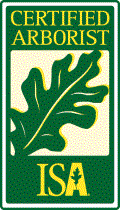 | 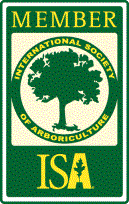 | ||
Craig de Pfyffer
Certified Arborist
Certificate # WE-6533A
Expiration Date: 12-31-2006
Disclaimer
Although all the recommendations in this report are based on sound and accepted horticultural practices, the author cannot be held responsible for the final outcome of the recommendations, or any liabilities associated with this project. Tree inspections, in this case, do not cover internal cavities, structural defects, or diseases with non-visible symptoms.
ENVIRONMENTAL DESIGNS ARBORIST
P.O. Box 247, Laguna Beach, CA. 92652
Tel: (800) 811-3010 Fax: (800) 811-3014
Craig@environmentaldesignsarborist.com
www.environmentaldesignsarborist.com
Copyright © 2009, Environmental Designs. All rights reserved
9-16-03
Job site:
Residence
Laguna Beach, Ca. 92651
Owner:
On September 12, 2003, I inspected one (Jacaranda mimosifolia) located at the job site on lot #127. See Topographic Map for location.
Overview
The Jacaranda is a healthy mature tree growing on a slope with other mature trees and vegetation. This tree is not a Candidate Heritage Tree and is not a Heritage Tree registered with the City of Laguna Beach, Ca. With the current house footprint and driveway alignment the tree will suffer no damage to it’s root system.
photo 1. Jacaranda - Gainsborough way, Laguna Beach.
Recommendations
· Install a construction fence around the tree at the drip line.
· Keep the fenced area clear of building materials, waste, and excess soil.
· Avoid grade changes within the drip line.
Tree Summary and History
Family: Bignoniaceae
Genus: Jacaranda
Species: mimosifolia
Category:
Trees
Height:
25 – 40 ft.
Width:
15 – 30 ft.
Hardiness:
Zones 12,13 15-24:H1, H2
Sun Exposure:
Full Sun
Bloom Color:
Violet/Lavender
Purple
Bloom Time:
Late Winter/Early Spring
Mid Spring
Late Spring/Early Summer
Foliage:
Deciduous
Other details:
Brazilian native
Summary / Conclusion
Thank you for calling on my services with your questions regarding your Jacaranda tree. Protect the tree with a construction fence and inform contractors and sub contractors working on the project to remain outside of fence.
If you have any questions concerning this report or if I can be of further service to you, please call me at any time.
Craig de Pfyffer
Certified Arborist
Certificate # WE-6533A
Expiration Date: 12-31-2005
Disclaimer
Although all the recommendations in this report are based on sound and accepted horticultural practices, the author cannot be held responsible for the final outcome of the recommendations, or any liabilities associated with this project. Tree inspections, in this case, do not cover internal cavities, structural defects, or diseases with non visible symptoms.
ENVIRONMENTAL DESIGNS ARBORIST
P.O. Box 247, Laguna Beach, CA. 92652
Tel: (800) 811-3010 Fax: (800) 811-3014
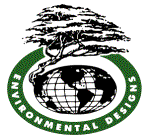
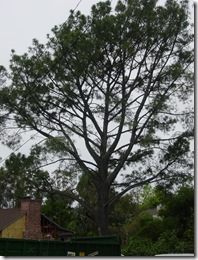
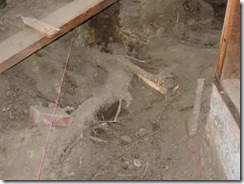
| HERITAGE TREES | May 23, 1995 | ||
| Date | Location | Description | Action |
| 12/17/75 | CATALINA 1555 | Torrey Pine | RES. NO. 75.200 |
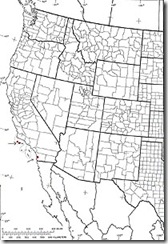
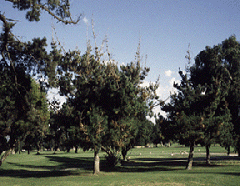 | TO LEFT: Fig 1. Multiple branch tip infections in Monterey pines grown on a golf course. |